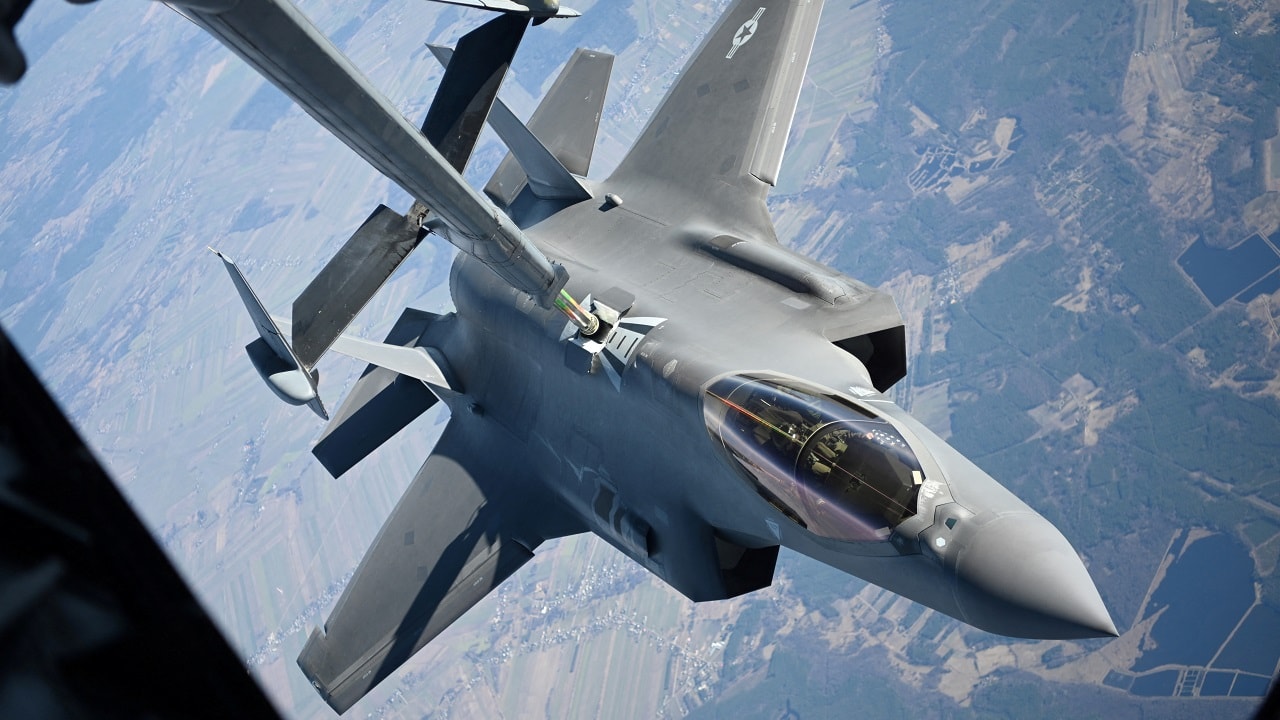A new report by the Government Accountability Office (GAO) notes that American taxpayers have poured billions into the F-35 program to the benefit of Lockheed Martin, yet the fighter remains subpar when it comes to readiness and, some would say, unreliable.
The recent crash of an F-35B in South Carolina in the wake of its pilot ejecting after losing control of the aircraft to its autopilot brings the problems with the program to the forefront.
Maintenance of the F-35 remains a headache for the U.S. military due to a lack of skilled technicians, and it remains behind when it comes to scheduling maintenance activities for repairs. The program remains heavily reliant on Lockheed Martin and Pratt & Whitney contractors; consequently, the U.S. government has limited say. Bureaucratic misallocations of resources by the Defense Department exist between military and civilian management of the F-35 program. It also has a serious problem due to a lack of spare parts.
F-35s Operating Below Acceptable Levels
“The F-35 fleet mission capable rate — the percentage of time the aircraft can perform one of its tasked missions — was about 55% in March 2023, far below program goals,” the report said.
The Defense Department planned to have 75% availability for the Air Force’s F-35A, 65% for the F-35B operated by the Marine Corps, and 75% for the F-35C.
GAO found that the program operates at a subpar level across the services. The Marine Corps, Navy, and Air Force each operate a version of the F-35. The Defense Department has failed to gain a better grip on the maintenance program for the aircraft.
“In October 2017, we reported that DOD did not have enough capacity to repair F-35 aircraft parts because it was 6 years behind schedule standing up those capabilities at military service depots. DOD—at the time of our review—was nearly 12 years behind schedule standing up those depots,” the GAO report said. “… DOD’s revised projection is that the program will not establish depot repair capability for all component repairs (68 workloads) until 2027. Of the 44 activated workloads, six were fully activated in calendar year 2022. This was an increase of 12 workloads since 2020 and, according to DOD officials …”
The Defense Department notes that it is still years away from achieving its goals. A major problem for the Pentagon when it comes to the F-35 program. The program has inadequate and inconsistent funding for maintenance. In one case documented by the report, the Navy’s Fleet Readiness Center East told the GAO investigators it did not have adequate funding for infrastructure improvements to maintain the F-35s through 2025.
Many of the problems stem from a misallocation of resources in the Pentagon budget, the GAO found.
F-35 vs. China
Such F-35 maintenance problems could hamper readiness in the event China decides to invade Taiwan or attack American allies in the western Pacific.
Currently, the U.S. operates around 450 F-35s of various configurations, which could allow it to mass Fifth-Generation fighter aircraft against China in the event of a war. The Air Force hopes to obtain 1,763 F-35As, and the increase in the number of F-35s in the export market has distributed some of the costs.
From an operational standpoint, the F-35 showed it could shoot down a fleet of Fourth-Generation fighters without being detected during the Air Force’s annual Red Flag training wargames.
China fears the F-35A due to its versatility as both an intelligence collection tool and as an adversary.
Modern Defence Technology, a Chinese language journal, published a study led by Bao Junchen from the National University of Defence Technology in Hefei, Anhui province in eastern China. It found that PLA’s Unit 31649 based in the southern province of Guangdong, suggested the F-35 could be a more potent threat than the older F-22 Raptor.
“Considering that [the F-35A] can be used both as a sensor for intelligence gathering and as a main escort for forward attacks, both soft kill and hard kill attack methods should be used against it,” the Chinese researchers wrote, according to the South China Morning Post.
They recommended using cyberattacks and electronic warfare to neutralize the fighters. As the most recent episode in South Carolina showed, the F-35’s computer system could potentially be the biggest problem that the U.S. military needs to resolve and to harden it from cyberattacks.
John Rossomando is a defense and counterterrorism analyst and served as Senior Analyst for Counterterrorism at The Investigative Project on Terrorism for eight years. His work has been featured in numerous publications such as The American Thinker, The National Interest, National Review Online, Daily Wire, Red Alert Politics, CNSNews.com, The Daily Caller, Human Events, Newsmax, The American Spectator, TownHall.com, and Crisis Magazine. He also served as senior managing editor of The Bulletin, a 100,000-circulation daily newspaper in Philadelphia, and received the Pennsylvania Associated Press Managing Editors first-place award for his reporting.
From the Vault
‘Vacuum Bombs Destroyed’: Ukraine Footage Shows Putin’s Thermobaric Rockets Destroyed
BOOM! Ukraine Video Shows Precision Strike on Russian Air-Defense System

